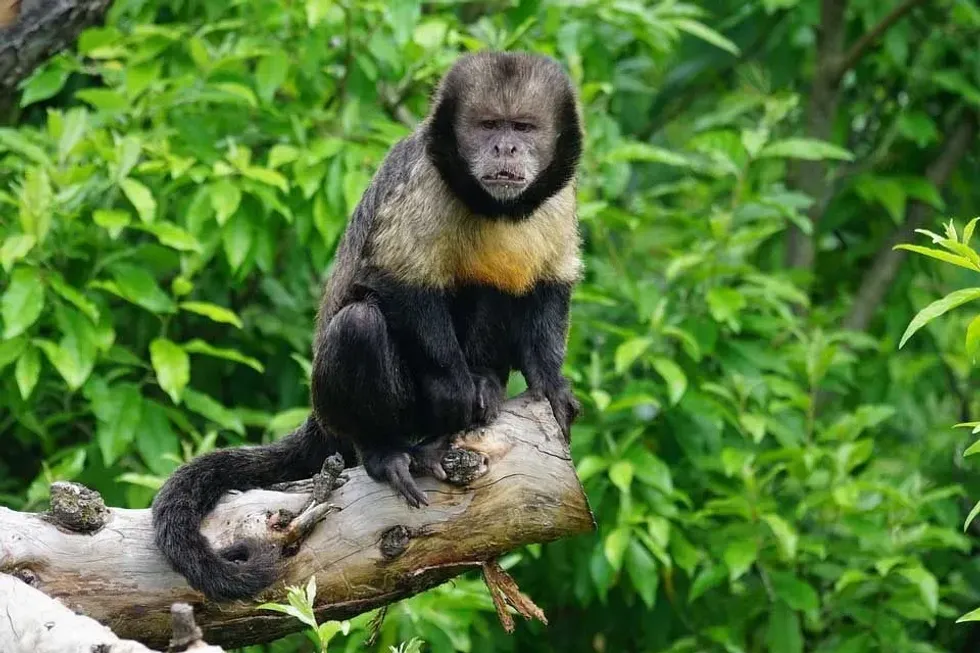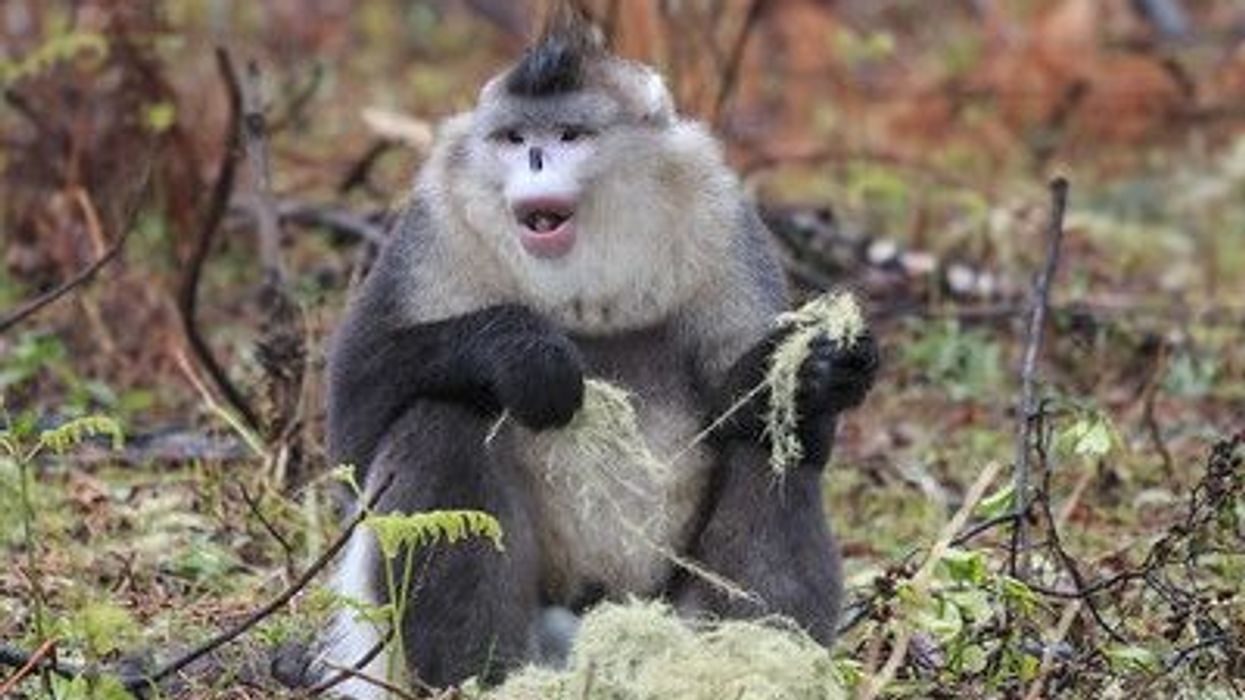New World monkeys, or Cebidae, are primates that have evolved. This monkey species is flat-nosed and has a prehensile tail which provides them with extra grip and balance. They are primate species that split from higher primates about 40 million years ago. They tend to spend more time on the ground than in trees.
These monkeys collectively belong to the group Platyrrhini. They are found in South and Central America and Mexico. There are over 100 of these species across the world. Want to know how they're different from the Old World monkeys? Keep reading!
Let's take a look at these New World monkey facts and information, and if you enjoy these then, do read about other primate species such as Woolley monkeys and gorillas for more amazing information.
New World Monkey Interesting Facts
What type of animal are New World Monkeys?
New World monkeys are monkeys that have evolved with time.
What class of animal do New World Monkeys belong to?
New World monkeys are primates that belong to the Mammalia class.
How many New World Monkeys are there in the world?
It is hard to estimate the total population of New World monkeys as there are around 100 distinct species worldwide.
Where do New World Monkeys live?
New World monkeys are known to live in groups in tropical forests and dry, dense forests.
What is a New World Monkey's habitat?
They prefer to live in dense tropical forests situated in Central and South America and Mexico. While Squirrel Monkeys' habitat is usually 1.2 mi (2000 m) above sea level, Capuchins are known to live 1.6 mi (2700 m) above sea level.
Who do New World Monkeys live with?
New World monkeys are primates that live in large groups. Their groups vary as per the species. Night monkeys have a small family consisting of a male, a female, and children, while in the case of squirrel monkeys, the groups may be as large as 500 individuals.
How long do New World Monkeys live?
The lifespan varies from species to species. Capuchins live up to 47 years in captivity, while squirrel monkeys only live for 14 years in captivity. Larger species of marmosets and tamarins live up to 18 years, while the smaller ones live up to 12 years.
How do they reproduce?
Capuchins and squirrel monkeys give birth to a single baby in a year, while the gestation period is different in both species. For capuchins, the gestation period is 149 to 168 days, and in the case of Squirrel Monkeys, it is 155 to 180 days.
It is difficult to determine the baby's parent because in capuchins and squirrel monkeys, the female mates with multiple males in the group.
In the case of tamarins and marmosets, a single female is present in social groups taking responsibility for breeding. She is dominant and either bred with multiple males or chooses to mate with a single individual.
Although there have been reports of multiple breeding females in tamarins and marmosets, the other female will be the daughter of the dominant female, and their reproductive rate is much lower. Tamarins and marmosets often give birth to dizygotic twins, but there have been incidents of triplets being born.
What is their conservation status?
There are different species of New World monkeys, and their conservation statuses are also different. Some are Vulnerable, some are Endangered, and some are Critically Endangered. Brown capuchins, lion marmosets, lion tamarin monkeys, buffy-head marmosets, and Brazilian bare-faced tamarins are Endangered species. Cotton-top tamarins and golden-bellied capuchins are Critically Endangered.
New World Monkey Fun Facts
What do New World Monkeys look like?

New World monkeys (Platyrrhini) have round heads and their eyes are large and forward-facing. Their body and tail are covered with fur. While squirrel monkeys' fur is dense and short, tamarins and marmosets have long and silky fur.
The term 'Platyrrhini' means flat-nosed; all of them have short and flat noses. Only capuchins have prehensile tails, but they mainly use them for balancing and use them less for grabbing stuff. Other species do not have prehensile tails.
How cute are they?
Many species of New World monkeys are small and cute in appearance. For example, squirrel monkeys are quite small, only 9-17 in (22-43 cm) in length.
How do they communicate?
They are vocal primates and use this ability to communicate with each other. Capuchins use a variety of calls and alarms to alert others of nearby predators. They are also seen using chemical cues to communicate. They often perform urine washing to mark the environment with their scent.
How big are New World Monkeys?
New World monkey's size varies. The shortest of them is the pygmy marmoset which is only 5.5-6.5 in (14-16 cm) in length, and the largest one, the howler monkey, is 22-36 in (56-92 cm) in length.
How fast can New World Monkeys run?
Different species of New World monkeys have different speeds. While squirrel monkeys can run up to the speed of 22 mph (35.4 kph), spider monkeys can run as fast as 35 mph (56 kph). They are quite agile and fast.
How much do New World Monkeys weigh?
Being the smallest among the primates, the pygmy marmoset weighs only about 4.2-6.7 oz (120-190 g), while the largest among the New World monkeys, the howler monkey, can weigh up to 22 lb (10 kg).
What are the male and female names of the species?
Neither the Old World monkeys nor the New World monkeys have separate names for the male and female of the species.
What would you call a baby New World Monkey?
Baby New World monkeys do not have any specific names; they are just called babies or young ones.
What do they eat?
They are omnivores. They eat fruits, seeds, and flowers, as well as small animals and insects. As squirrel monkeys need more protein, they prey more on animals. On the other hand, capuchins are smarter and smash nuts or fruits to open them, and even use rocks to open up oysters.
Are they aggressive?
Unlike Old World monkeys, New World monkeys are more curious about human beings instead of being aggressive. They often accept food and medication provided by humans. However, they might get aggressive if you maintain long eye contact with them.
Would they make a good pet?
They are smarter and more intelligent than Old World monkeys. They can be taught easily and sometimes understand what humans are trying to convey to them. Capuchins are one of these primates; they are often seen in movies and on the streets performing and collecting money.
Did you know...
New World monkeys belong to the family called Cebidae, which is further divided into five subfamilies.
Like Old World monkeys, they also have nails on their fingers and fingerprints. Their tails have developed ridged pads similar to fingerprints which provide extra grip.
The term 'Old World' refers to Europe, Asia, and Africa while the term 'New World' refers to America. About 40 million years ago, they diverged from Old World monkeys, which are native to Europe, Asia, and Africa.
Different types of New World Monkey
They are divided into five subfamilies which are Cebidae (squirrel monkeys and capuchins), Atelidae (howler monkeys and spider monkeys), Aotidae (night monkeys), Pitheciidae (sakis, titis, and uakaris), and Callitrichidae (marmosets and tamarins).
New World Monkeys vs. Old World Monkeys
The basic difference between these groups of monkeys is that the Old World monkeys are located in Europe, Africa, and Asia, while New World monkeys are found only in Central and South America and Mexico.
Some examples of Old World monkeys are baboons, macaques, and vervet monkeys.
Another difference is that over time, New World monkeys have developed ridged pads similar to fingerprints on their tails which provide extra grip, while Old World monkeys lack prehensile tails.
Here at Kidadl, we have carefully created lots of interesting family-friendly animal facts for everyone to discover! Learn more about some other mammals from our Ghost Bat Facts and Pyredoodle Facts pages.
You can even occupy yourself at home by coloring in one of our free printable New-World Monkeys coloring pages.










